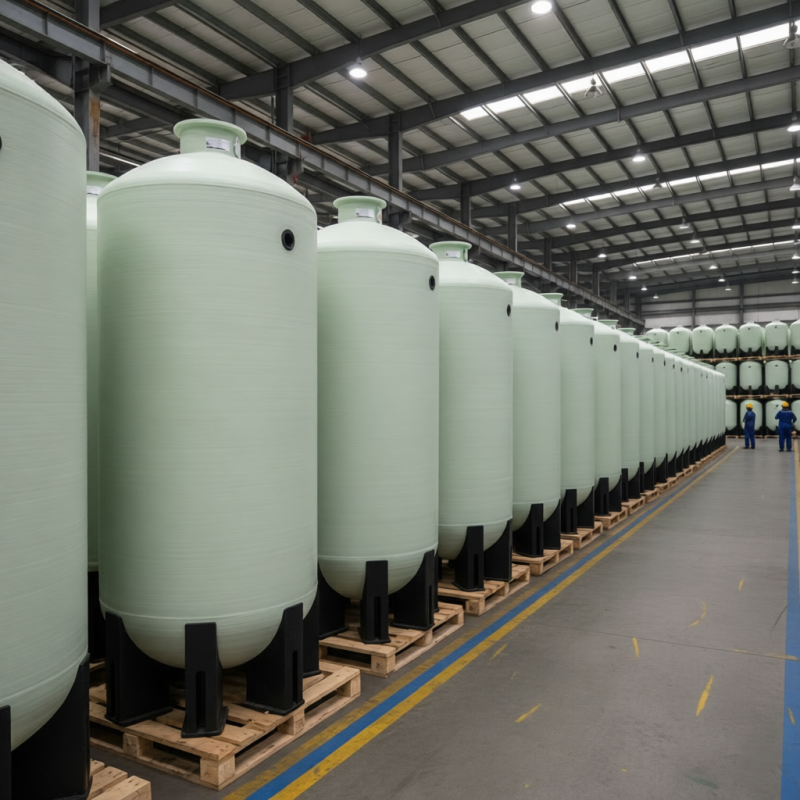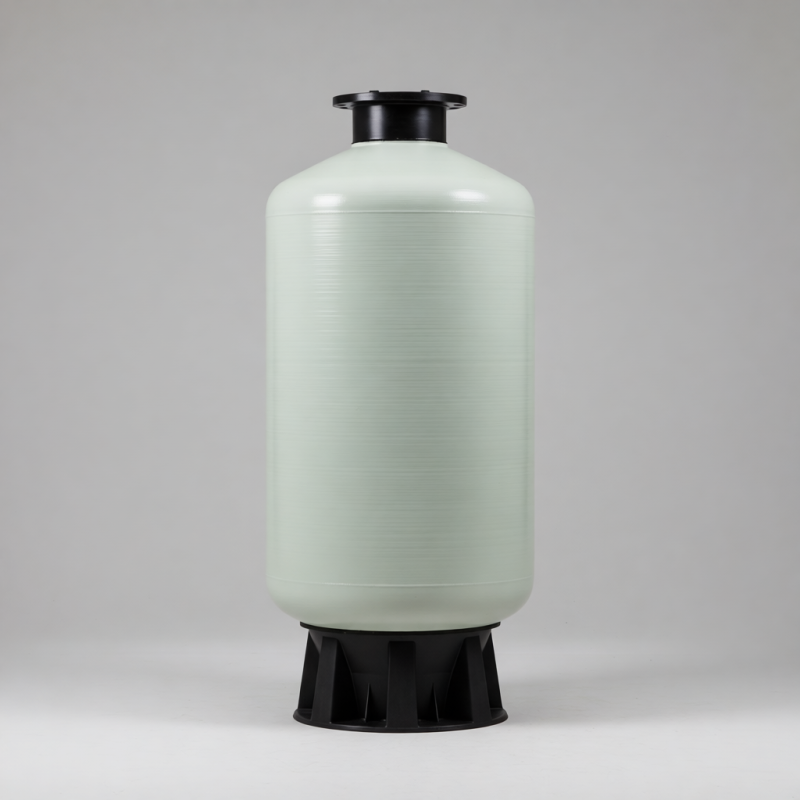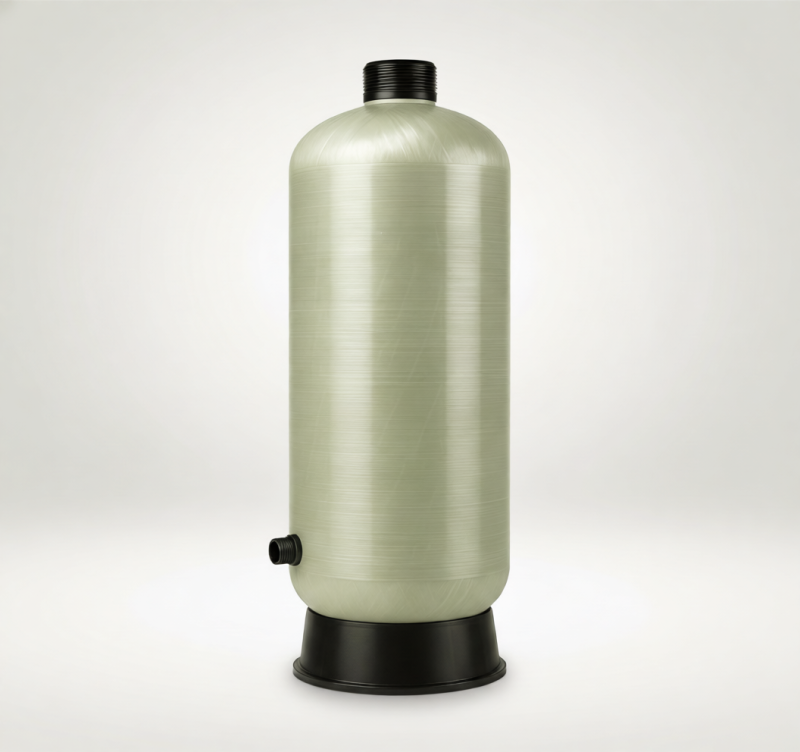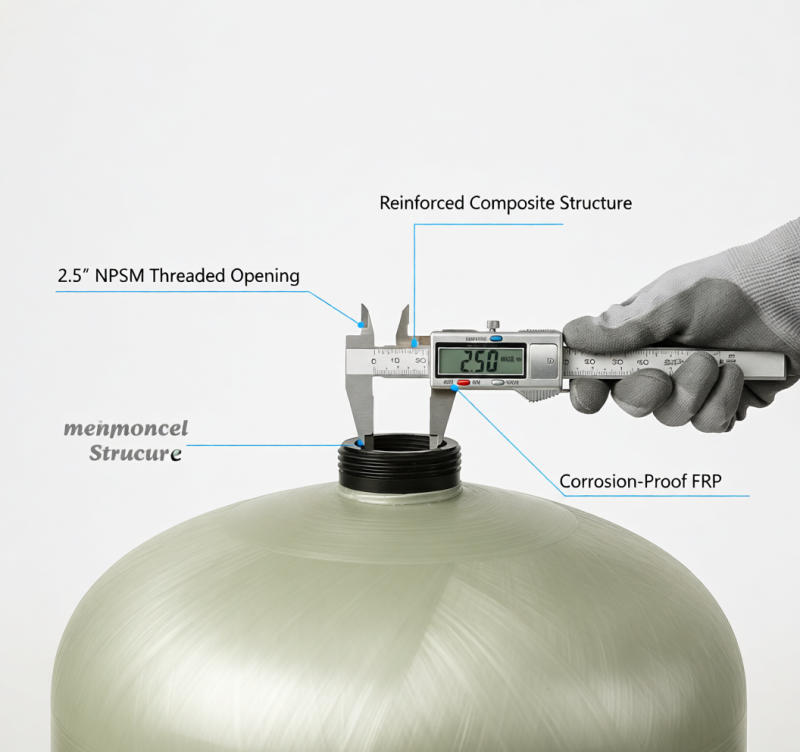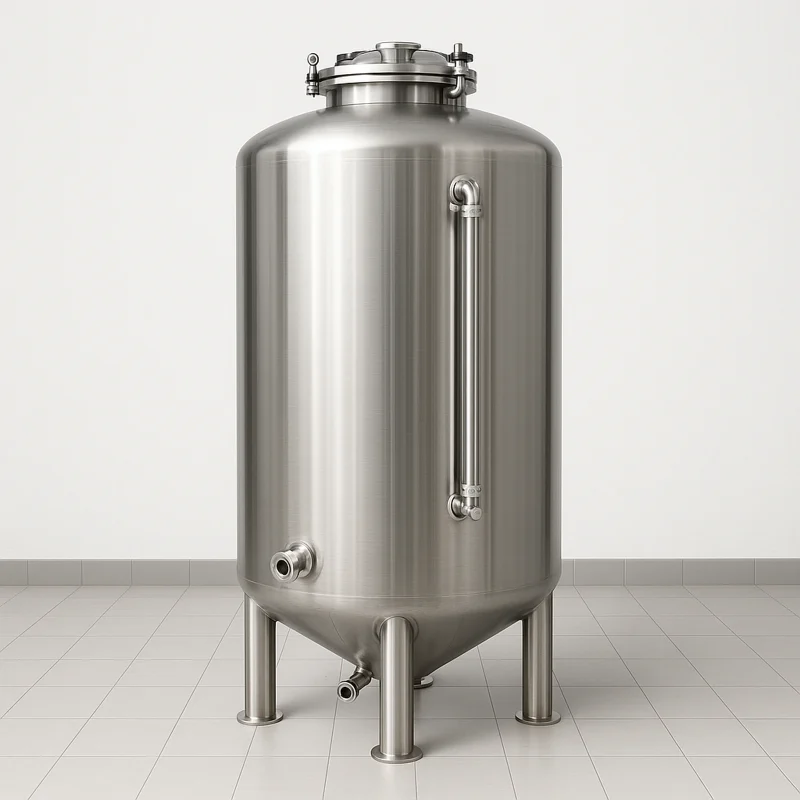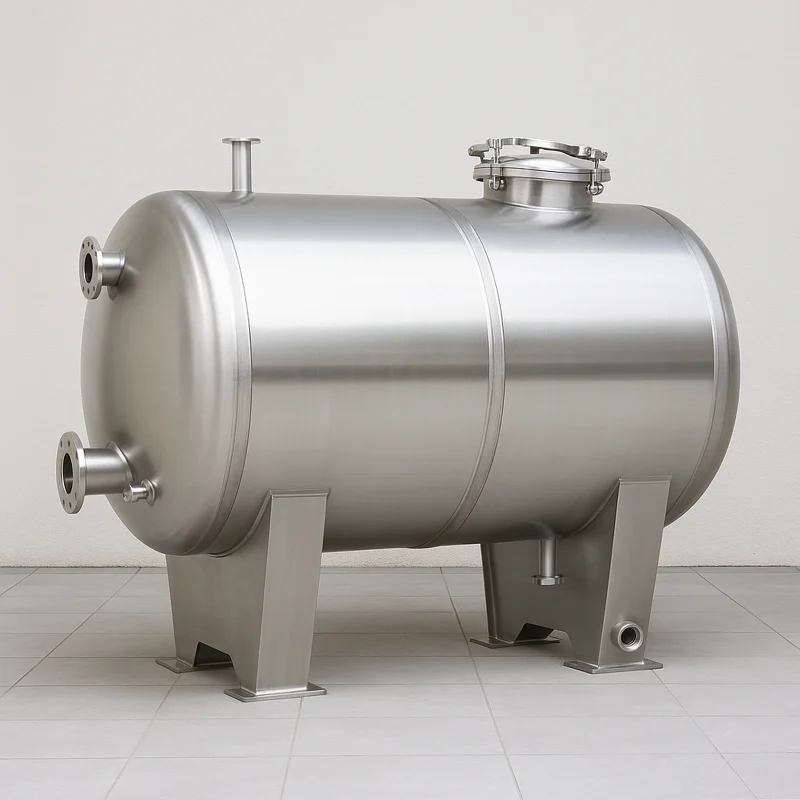500L Horizontal Stainless Steel Water Tank (Low Height)
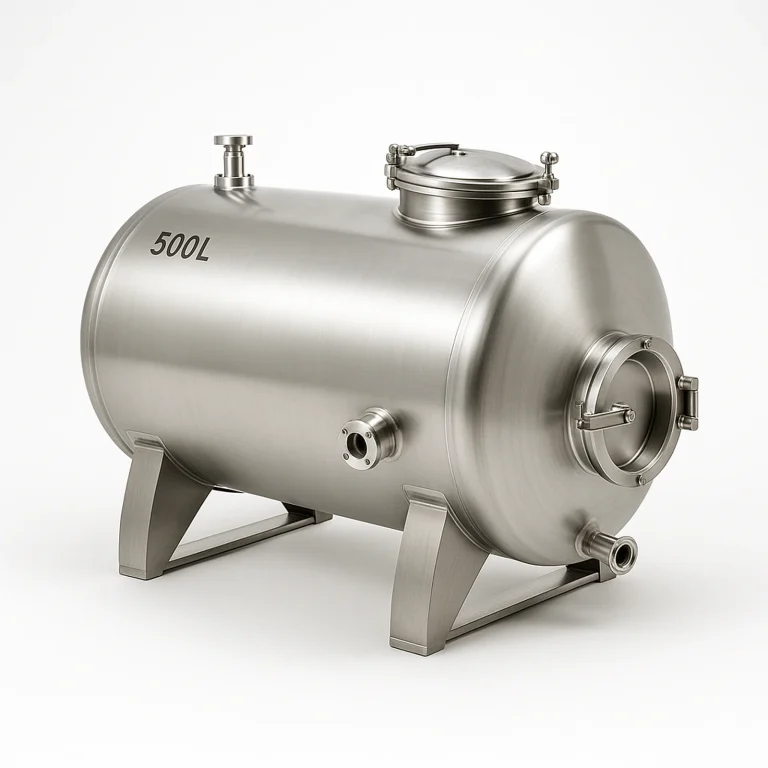

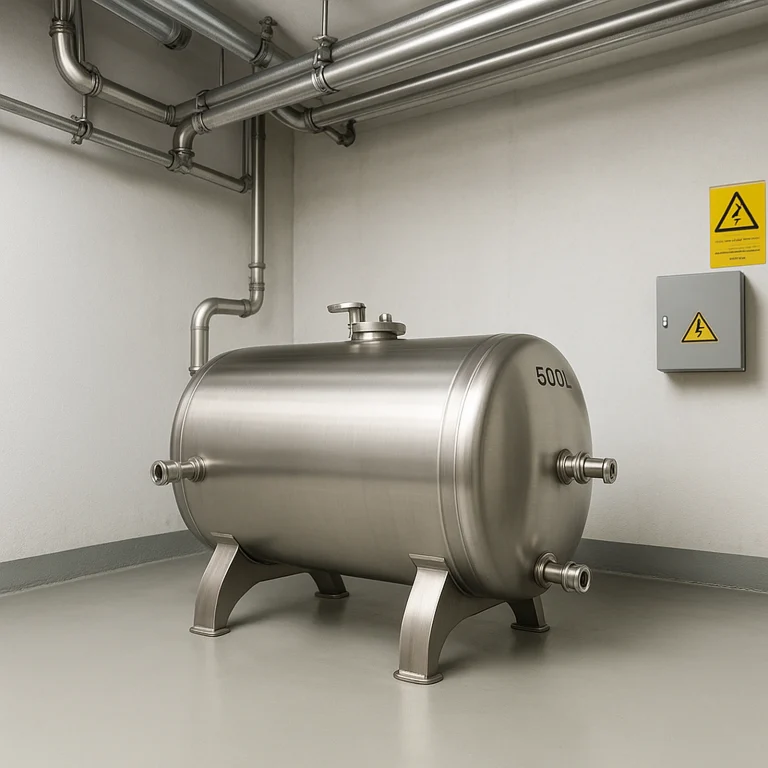
500L Horizontal Stainless Steel Water Tank (Low Height)
A compact 500L horizontal stainless steel water tank designed for low ceiling rooms and mobile or fixed skids. The saddle-supported layout keeps overall height low while providing a stable base. Built in 304 or 316L with sanitary TIG welding and validated passivation, the tank includes tri-clamp or flanged ports and a lowest-point drain for easy cleaning. Leak or hydrostatic test and material certificates are available on request.
A compact 500L horizontal stainless steel water tank designed for low ceiling rooms and mobile or fixed skids. The saddle-supported layout keeps overall height low while providing a stable base. Built in 304 or 316L with sanitary TIG welding and validated passivation, the tank includes tri-clamp or flanged ports and a lowest-point drain for easy cleaning. Leak or hydrostatic test and material certificates are available on request.
Value in tight spaces
When headroom is limited but you still need buffer capacity, a horizontal 500L tank is the practical answer. The low overall height fits under pipe racks and mezzanines, and the wide saddle contact reduces point loads on the floor.
Design and construction
• Orientation: horizontal on dual saddle supports with anchor plates
• Material: 304 or 316L stainless steel (project specific thickness)
• Interior: brushed as standard; mirror or electropolish available for lower Ra targets
• Connections: tri-clamp for sanitary lines or ANSI/DIN flanges for utilities
• Manway: side or top quick-open type with EPDM or silicone gasket
• Drainage: outlet positioned at the true low point with an internal slope to reduce hold-up
What you get
• Factory leak or hydrostatic test report (depending on design)
• Material certificates and passivation record
• Basic GA showing nozzle schedule; weld map and surface report available on request
Options
• Insulation with stainless jacket for chilled or hot service
• Spray ball (fixed or rotating) and CIP-ready ports
• Level gauge or transmitter; thermometer; sterile vent port for high-purity lines
Use notes and limitations
• Standard build is atmospheric and vented; for pressurized service specify the design pressure and applicable code at RFQ stage.
• Horizontal tanks need more floor length than vertical tanks; confirm footprint in the layout drawing.
• For aggressive chlorides or high temperatures, 316L and stricter cleaning control are recommended.
How it compares
Compared with a 500L vertical tank, the horizontal version reduces overall height and often simplifies insulation uniformity. The trade-off is longer floor space and the need to plan spray coverage with one or two heads.
| Parameter | Typical Specification (500L Horizontal) |
|---|---|
| Capacity | 500 L, atmospheric by default (vented) |
| Orientation | Horizontal on dual saddle supports with anchor plates |
| Material | 304 or 316L stainless steel |
| Thickness (reference) | Shell/head 2.0 to 2.5 mm (project specific) |
| Interior finish | Brushed (typ. Ra 0.8 to 1.6 um); mirror or electropolish optional |
| Connections | Tri-clamp sanitary as standard; ANSI/DIN flanges optional |
| Nozzles (typ.) | Inlet DN25; Outlet DN32 to DN40 at lowest point; Drain DN25; Vent DN25; CIP DN25 |
| Manway | Side or top quick-open, 300 to 400 mm |
| Reference dimensions | Dia. 600 to 750 mm; shell length 900 to 1200 mm; overall height kept low for pipe clearance |
| Options | Insulation with SS jacket, spray ball, level gauge/transmitter, sterile vent port |
| Documents | Leak/hydrostatic test report, material certificates, passivation record |
• Water treatment: RO/DI buffer on compact skids and under low pipe racks
• Beverage and food: process water buffer where ceiling height is limited
• HVAC and utility systems: insulated buffer for chilled or tempered water
• Mobile or modular equipment that requires low center of gravity
• Pilot lines or retrofit projects with strict height constraints
Value in tight spaces
When headroom is limited but you still need buffer capacity, a horizontal 500L tank is the practical answer. The low overall height fits under pipe racks and mezzanines, and the wide saddle contact reduces point loads on the floor.
Design and construction
• Orientation: horizontal on dual saddle supports with anchor plates
• Material: 304 or 316L stainless steel (project specific thickness)
• Interior: brushed as standard; mirror or electropolish available for lower Ra targets
• Connections: tri-clamp for sanitary lines or ANSI/DIN flanges for utilities
• Manway: side or top quick-open type with EPDM or silicone gasket
• Drainage: outlet positioned at the true low point with an internal slope to reduce hold-up
What you get
• Factory leak or hydrostatic test report (depending on design)
• Material certificates and passivation record
• Basic GA showing nozzle schedule; weld map and surface report available on request
Options
• Insulation with stainless jacket for chilled or hot service
• Spray ball (fixed or rotating) and CIP-ready ports
• Level gauge or transmitter; thermometer; sterile vent port for high-purity lines
Use notes and limitations
• Standard build is atmospheric and vented; for pressurized service specify the design pressure and applicable code at RFQ stage.
• Horizontal tanks need more floor length than vertical tanks; confirm footprint in the layout drawing.
• For aggressive chlorides or high temperatures, 316L and stricter cleaning control are recommended.
How it compares
Compared with a 500L vertical tank, the horizontal version reduces overall height and often simplifies insulation uniformity. The trade-off is longer floor space and the need to plan spray coverage with one or two heads.
| Parameter | Typical Specification (500L Horizontal) |
|---|---|
| Capacity | 500 L, atmospheric by default (vented) |
| Orientation | Horizontal on dual saddle supports with anchor plates |
| Material | 304 or 316L stainless steel |
| Thickness (reference) | Shell/head 2.0 to 2.5 mm (project specific) |
| Interior finish | Brushed (typ. Ra 0.8 to 1.6 um); mirror or electropolish optional |
| Connections | Tri-clamp sanitary as standard; ANSI/DIN flanges optional |
| Nozzles (typ.) | Inlet DN25; Outlet DN32 to DN40 at lowest point; Drain DN25; Vent DN25; CIP DN25 |
| Manway | Side or top quick-open, 300 to 400 mm |
| Reference dimensions | Dia. 600 to 750 mm; shell length 900 to 1200 mm; overall height kept low for pipe clearance |
| Options | Insulation with SS jacket, spray ball, level gauge/transmitter, sterile vent port |
| Documents | Leak/hydrostatic test report, material certificates, passivation record |
• Water treatment: RO/DI buffer on compact skids and under low pipe racks
• Beverage and food: process water buffer where ceiling height is limited
• HVAC and utility systems: insulated buffer for chilled or tempered water
• Mobile or modular equipment that requires low center of gravity
• Pilot lines or retrofit projects with strict height constraints

